QuestionQUESTION: We have a two year old female spayed Australian Shepherd who is a joy to live with in pretty much all ways except that she is not tolerant of people she does not know well. This has been a behavior she has exhibited since she was a puppy and I am aware a certain amount of aloofness is not an unusual trait for her breed. As a puppy, we would have our friends/strangers offer her treats. No dice. She would not, and still will not, take a treat from a person she does not know. What she wants to do, and if allowed to do, gets all right, is to check out the person herself. For this exercise,the person must stand still and let her sniff. They cannot reach for her in any manner. Once she has deemed them safe,they can reach under her chin. If they reach over her head, no dice. All of this is well and good and at the vets for example where there are dog people, its a perfect system. She has never snapped at anyone and,until recently, if a person ignored my direction and reached for her head, for example, she would back up and growl. She never used to move towards the perceived threat. We have recently moved into a new home and her behavior with guests to our home has escalated somewhat. Please know, she is a serious pleaser and is remarkably obedient. She has, however, now begun to move towards the new person in her home and "warn" them not to come between her and me or not to enter into a room, for example. She does not bare her teeth. She may bark or she may give a low short growl. I will redirect her when she exhibits these behaviors and get her in a sit and maybe have her shake hands with me or catch a ball. (she is a serious show off and while she doesn't want these "potential threats" petting her or standing too close to me, she is wholeheartedly in favor of them watching her perform.)Then I may sit on the couch with the new person and if they are willing, let her come and sniff them. I feel like I am doing what I know to help her get over this "stranger aversion", but am concerned enough to write because of the escalation (ie, moving forward now instead of backing up). And, the vet, whom she adores, thinks she is a doll and saw zero aggression when she was left with them overnight. The groomer, maybe not so much,so I have not taken her back there again. Any insight or suggestions you may have are welcomed.
ANSWER: Fear aggression is not an uncommon fault in the Australian Shepherd (and that's what you're seeing).
Rule of thumb: a growl is a bite waiting to happen. When a dog begins to move forward toward the feared object ("stranger"), this is most likely because somewhere along the line the dog's warning (growl or obvious display of possible aggression) was "rewarded" by someone who backed away or, worse (and normal), showed fear (thereby giving the dog more cause to be anxious).
Your redirection is ACTUALLY disengaging her fight/flight mechanism. This means: the biologic response (fight/flight) is extinguished when the dog begins to 'think' and react to cues (commands).
Plan A (before suggesting a CAAB):
Put a house tab on this dog (lightweight leash, handle cut off so it can't get caught on anything). "Invite" a "stranger" to the house. This person must be:
* totally unafraid
* sucking a mint (masks adrenaline on the breath)
* completely ignore the dog AS IF SHE IS NOT THERE
* do NOTHING to engage her, EVEN if she approaches him (btw, is this behavior directed equally to men AND women???)
The MOMENT the dog goes into fight/flight, take the house tab, make no eye contact, say nothing, put the dog behind a closed door for 30 seconds, open the door, say nothing, go about your business with the "stranger" and repeat the above if dog reinstates her initial fear behavior. IF SHE DOES NOT, and if she appears to be calmer (no visible sign of wariness or fear), ask for "sit", verbally reward, go back to your "visitor". Watch the dog's reactions closely (and have your "strange" visitor do the same) and TAKE NOTES (the dog won't mind lol). DO NOT have the "stranger" leave until the dog has settled down and is obviously calm. A day or so later, another "stranger" should be "invited" (if you're able to get volunteers) or the same one can be re-invited (even though the dog may have learned about that person's presence). What we are trying to do is introduce "strangers" in random ways over the course of a couple of weeks and repeat the removal scenario the MOMENT the dog begins to react.
Report back using followup feature. Let's see if this confuses her sufficiently so that we can then attempt some counter conditioning.
---------- FOLLOW-UP ----------
QUESTION: You asked if the behavior is equally directed to men and women and the answer is yes. The only thing that distinguishes her behavior with new people is whether or not the new person attempts to initiate some kind of interaction with her. If new people completely ignore her as if she is not there and do nothing to engage her, as you suggest in the exercise, and as I ask people to do when they visit my home, she may snort around a few times and be kind of wary of them, but then she will want to come over and check them out (sniff pants, shoes, hands) and if they will let her do that and resist the urge to reach for her while this is going on, she usually is able to satisfy herself that they are not a threat and will nudge their hand for a pet (under the chin; reaching over her head is never okay unless you are a beloved family member). With people who are totally unafraid and who are completely calm, she may decide in a manner of minutes that they are not a threat. With people who are more tightly wound or who are a little afraid or who are pushy with her, she may never allow them to get close to her and remain wary when they are close to me.
AnswerPlease try the above recommendation. Counter conditioning is quite difficult and I can't see anything from here. When you say she "nudges" the "stranger" to interact with her: do not allow the "stranger" to do so. In fact, the person should turn his/her back on the dog. Your dog may have an inherited fear aggression problem (not uncommon in this breed, I've seen many) and, coupled with the genetic need to "control" environment (especially those she perceives as most "important"), she appears to be developing some rank opportunism here. Try the "stranger" scenario I described (if possible) and then report back. I think putting this dog in a less "important" place in social hierarchy (addressing the rank opportunism psychologically) might help here.

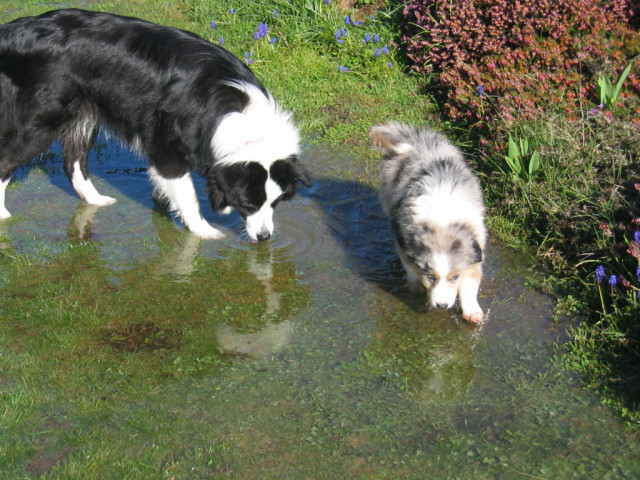 Dog in Heat?
QuestionLily and Jorge
QUESTION: Hello,
We have
Dog in Heat?
QuestionLily and Jorge
QUESTION: Hello,
We have
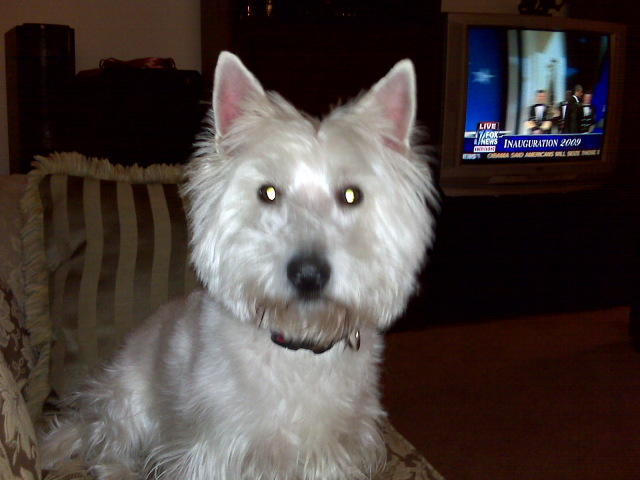 Companion for Lonley Westie
Question
Shannon
We have a 5-year-old neutered Westie w
Companion for Lonley Westie
Question
Shannon
We have a 5-year-old neutered Westie w
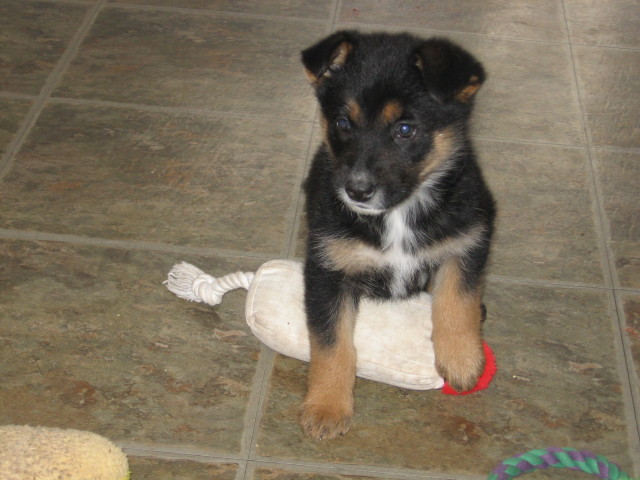 puppy problems
QuestionQUESTION: I am the proud owner of 2 german shep
puppy problems
QuestionQUESTION: I am the proud owner of 2 german shep
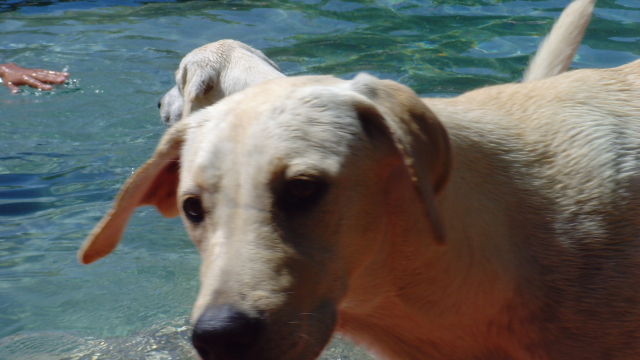 Psychological trauma
Question
Izzy
I recently took my 1 year old dog to a fr
Psychological trauma
Question
Izzy
I recently took my 1 year old dog to a fr
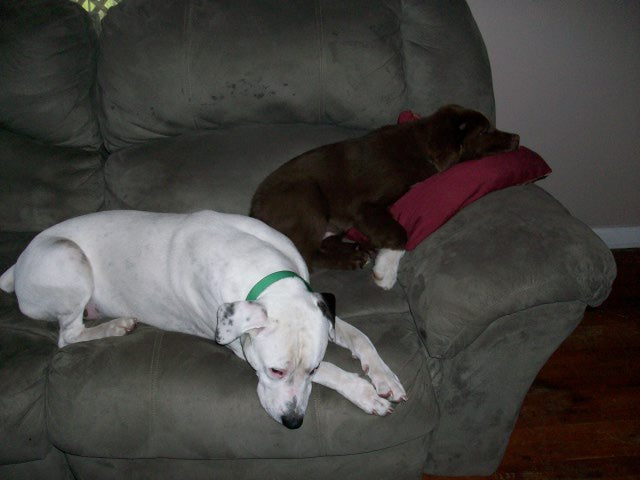 American Bulldog aggression
Question
Buddy and Rez
I have a 2 year old Ameri
American Bulldog aggression
Question
Buddy and Rez
I have a 2 year old Ameri